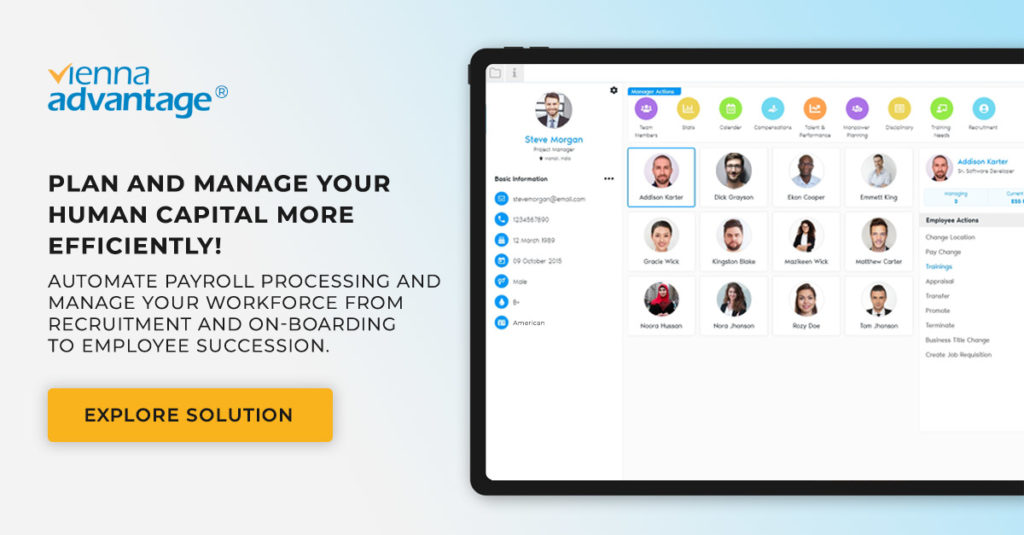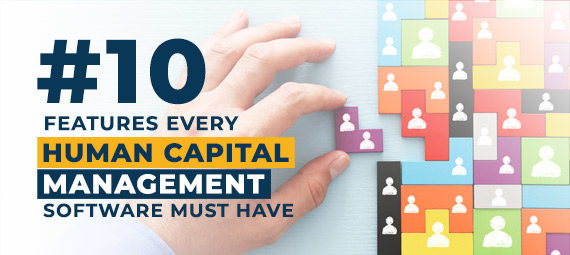In this era of a diversified and distributed workforce, a robust Human Capital application is crucial for the modern-day enterprise. For HR leaders and practitioners, it is crucial that Human Capital Management (HCM) software is able to manage all aspects of organizational HR – from strategic topics such as employee succession planning and competency development, to the more operational ones such as managing employees’ claims and benefits.
In this article, we examine the top 10 features that an HCM software must have to deliver value to all stakeholders:
- Organization Management
- Recruitment
- Comprehensive Employee Records Management
- Performance Management
- Learning and Development
- Succession Planning
- Leave Management
- Attendance Management
- Claims and Benefits
- Employee Self Service
#1 Organization Management
The key building blocks of an organization are the various organizational entities – the most important of which are “divisions”, “departments”, “location”, and “grade”. A Human Capital Management (HCM) software must support a flexible organization definition that may result from multiple combinations of the entities mentioned above. Such a definition eventually leads to an organization chart, which is the HR blueprint of an organization.
The HCM software must provide the feature to record important parameters for each of the above entities. For instance, employee “grade” is a significant factor that influences salary scales in organizations, therefore the Human Capital Management solution must provide for the ability to record such information while defining the organizational entity. Equally important is the fact that in any downstream function, such as payroll processing or calculation of employee entitlement, the application must validate employee-level data with the frameworks that have been defined prior in these organizational entities. Organizations often evolve – they add locations, acquire companies and restructure themselves to react to market forces and stay competitive. The Human Capital Management (HCM) software must be flexible enough to allow modifications to these fundamental organizational entities.

#2 Recruitment
The recruitment cycles of companies typically start from manpower budgeting, which could occur annually and is recalibrated quarterly. A HCM software must-have features to support the entire end-to-end manpower planning to the employee onboarding process. The Human Capital Management software should provide for cost-center wise budgeting of manpower and for budget owners to have visibility on the status of their available budget. The HCM software should have the feature of creating job openings with reference to the budget of the respective cost center. Usually, these job openings are advertised in regional job portals or on the company website, for which the Human Capital application must provide integration capabilities to activate, publish and unpublish job openings on various portals. In the operational aspects of recruitment, HR personnel deal with a deluge of applicants, and companies these days use specialized Artificial Intelligence (AI) based tools to filter through these applications and assign relevance scores to each application. The Human Capital Management (HCM) software must provide two-way integration with such tools and provide updated visibility to the HR business partner on the next relevant action on each application. The HCM software must also have the feature to help the management and coordination of the evaluation process, which may involve several rounds and formats of evaluation for different positions and for managing the applicant acceptance process – from the offer letter to recording the candidate acceptance. Finally, the recruitment module of a HCM software must provide a seamless transition of an applicant to an employee, while automatically carrying forward the majority of applicant data to the corresponding new employee record.
#3 Comprehensive Employee Records Management
The nerve center of all HR activities in an organization is the employee record, which forms the basis for all transactions in the organization. Certain jurisdictions impose specific compliance requirements with respect to employee data that employers need to maintain. The HCM software must be extensible enough to accommodate these statutory requirements, many of which may vary for each country a multi-national company operates in.
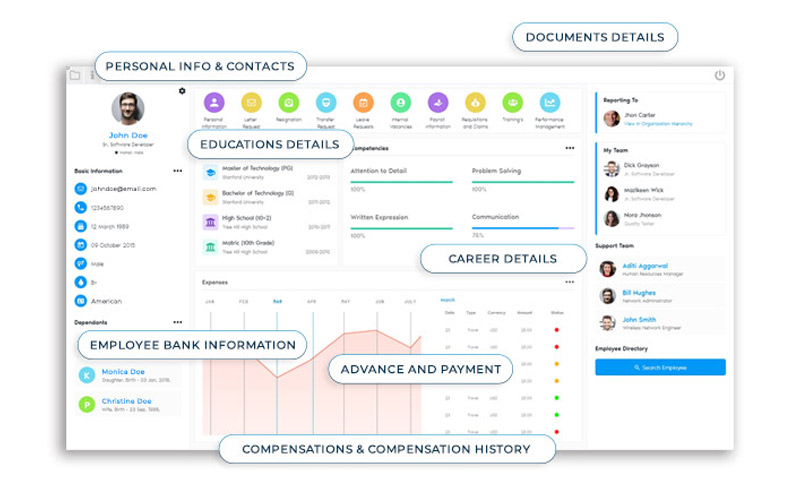
The sensitivity of employee data also means that the Human Capital Management software must enforce strict role-based access control to ensure data privacy and confidentiality. From a legal and compliance perspective, the software must provide clear audit trails to preserve the history of changes to employee records.
#4 Performance Management
Companies usually adopt one of the many versions to manage the performance of their employees. The Human Capital Management (HCM) software must have a comprehensive performance management module that covers the entire spectrum of the process – from goals definition to recording review proceedings and initiating appropriate actions based on employee performance. This means that the “goals definition” feature in the HCM software must allow for cascading of organizational goals – from the executive leadership level to all organizational levels. The Human Capital application must allow managers and HR business partners to clearly define Key Result Areas (KRAs), the corresponding metrics or Key Performance Indicators (KPIs), and any behavioral or technical competency that is required for each role within the organization.
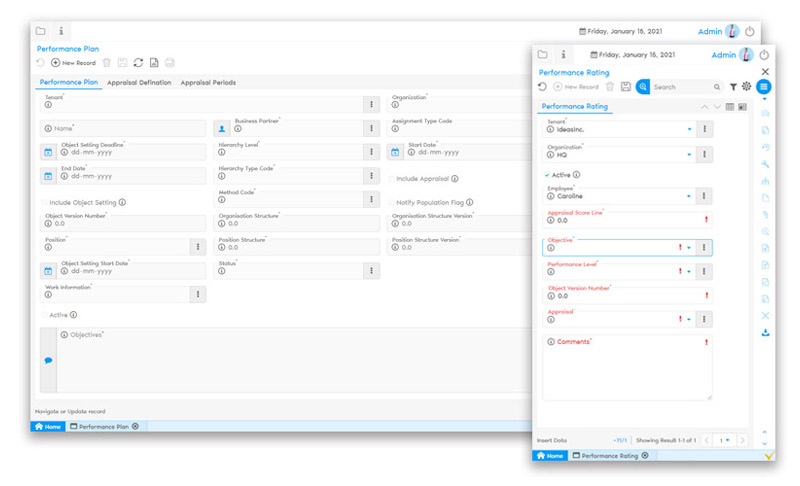
On the basis of these goals definition, the HCM software should allow recording of feedback on employee performance at different periodicity – annually, semi-annually, quarterly, or on a need-basis. Depending on whether the organization has a 360-degrees review process, the HCM software should also allow recording of the performance and behavioral feedback from different stakeholders for an employee – from employees, they manage to their peers, and definitely their direct and matrix-line supervisors. The Human Capital Management software must provision system workflows that automatically trigger requests for feedback and alert the HR business partner or the manager for delays in the process. Upon successful completion of a review cycle, the HCM software must provide a robust mechanism to record feedback on several criteria and generate actionable reports that can help managers and HR business partners decide on the employee’s career progression within the company and clearly identify their developmental needs along specific competency dimensions.
#5 Learning and Development
In this age of evolving competency landscape, companies invest heavily to ensure their employees are current in their skills. The HCM software must provide features that support the HR business partner in this regard – from budgeting for employee training to executing them and recording the benefits of these interventions.
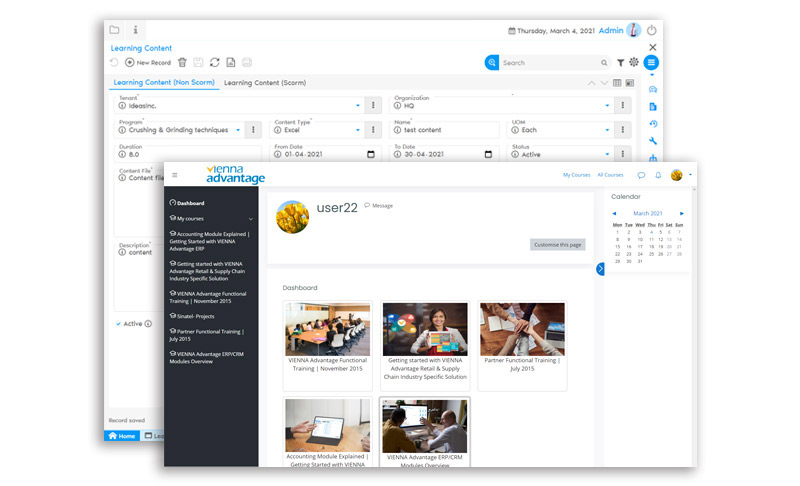
The Learning and Development (L&D) process starts with a comprehensive Training Needs Identification (TNI) process. To support the TNI process, the Human Capital Management software must have the feature for the employee to register their own training needs – both behavioral and technical that they feel are critical for them to perform their tasks. This must be a self-service module in the HCM software, where the application would trigger an approval workflow from the employee to the respective manager. The application must then provide the HR business partner the ability to record training program nominations for each employee and once confirmed, the module must be directly integrated with the budgeting module to consume the respective training budget from the employee’s cost center. Without such an integrated solution, there will be limited visibility for decision-makers on the financial impact of L&D initiatives.
#6 Succession Planning
To mitigate key person risks and to ensure leadership continuity, organizations engage in extensive succession planning processes. The Human Capital Management (HCM) software must have a dedicated module for the HR business partner to manage this process. For example, the HCM software must provide the ability to identify top-performers and high potential employees on the basis of their performance feedback and empanel them on a formal succession planning path.
The Succession Planning module must allow the HR business partner to record the key projects that an empaneled member has been staffed on and continually record their performance and feedback – both qualitative and quantitative. Furthermore, the application should have the provision for the HR business partner to record specific training programs and executive development programs that empaneled individuals are nominated to and record their performance on such programs. A key part of the Human Capital Management software is the ability to continually generate relevant analytics and visualization for each empaneled employee to make appropriate course corrections as required.
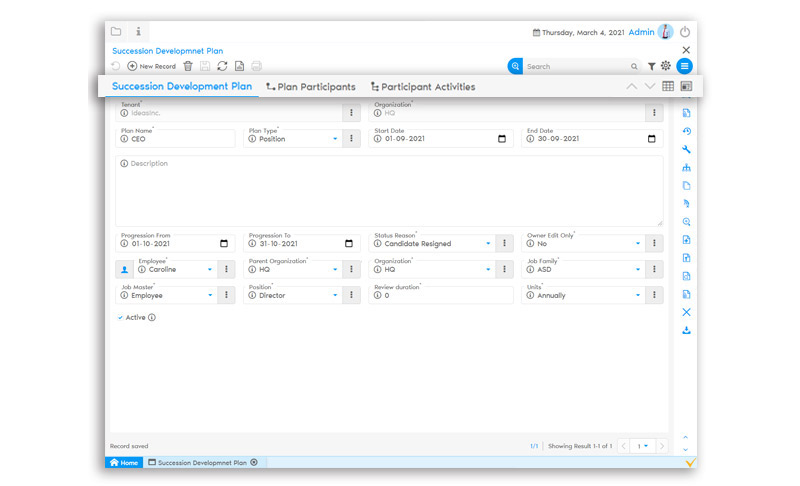
Many companies employ a rigorous competency-based framework to manage employee succession planning. The HCM software must provide the framework to define and specify various types of competencies (technical and behavioral) in the form of a competency dictionary and include an assessment of these competency dimensions.
#7 Leave Management
One of the most complex elements of the HR function is the management of leaves for various types of employees. The criticality of this module is more so because of its direct impact on employee payroll. As such, the Human Capital Management software should have the provision to define various leave types and assign entitlement criteria to different leave types by employee grade or location. The HCM software must also handle complexities of all kinds – in ways that leave accrue and are consumed by employees. The logic for these activities may differ from one jurisdiction to another therefore the application must be flexible enough to manage these variances.
#8 Attendance Management
With the prevalence of biometric attendance devices, companies are rapidly embracing such technologies to manage employee attendance across various types of locations – from offices to production facilities and construction sites. The HCM software must be able to integrate seamlessly with a wide variety of such devices and be able to accept, refine and inject attendance data for downstream activities. The application must be robust enough to accommodate the definition of various attendance policies such as shifts, on-call, and other regular or custom periodicities that companies employ. Attendance policies may also differ based on employee category and the Human Capital Management software must provide the feature to map various.
#9 Claims and Benefits
Employee claims and discretionary benefits are significant payroll components and require special treatment from HCM software. Firstly, the Human Capital Management software must have the provision to assign benefit entitlement per organization unit or a combination of such units such as employee grade or a combination of employee grade and location. Similarly, employees incur business expenses that may arise from business travel, training, and development or other activities they perform while on company duty. The HCM software must have the provision for employees to submit claims applications and approval workflows that may be based on the monetary value of those claims.
#10 Employee Self Service
Last, but not least, a large part of the day-to-day activities of HR business partners revolves around responding to specific requests from employees. These requests can be as simple as requesting payslips of previous payroll periods to queries on leave entitlements. An ideal HR software must have the provision for employee self-service functions where all employees are able to perform these tasks and view all relevant payroll or leave data from a simple employee portal by themselves. With such an employee self-service feature, HR business partners could use their valuable time and resources in more value-added tasks other than responding to employee queries.
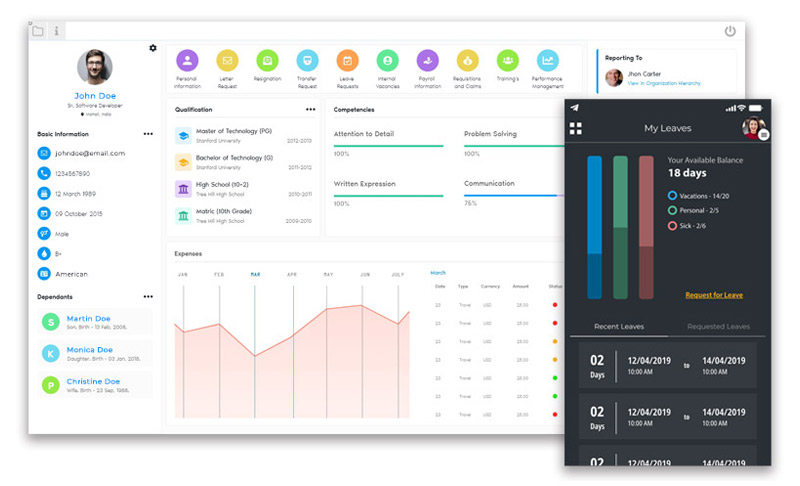
VIENNA Advantage HCM software
VIENNA Advantage has a comprehensive HR solution that includes all the above-mentioned features. We cater to organizations across business sectors – from manufacturing to services and incorporate nuances of these sectors in our solutions.
VIENNA Advantage HR module can be deployed as a part of the overall VIENNA Advantage ERP application or can be implemented with other ERP applications. We provide an extensive web-services layer, which makes it possible to integrate the HR modules with other applications that an organization may be using.
